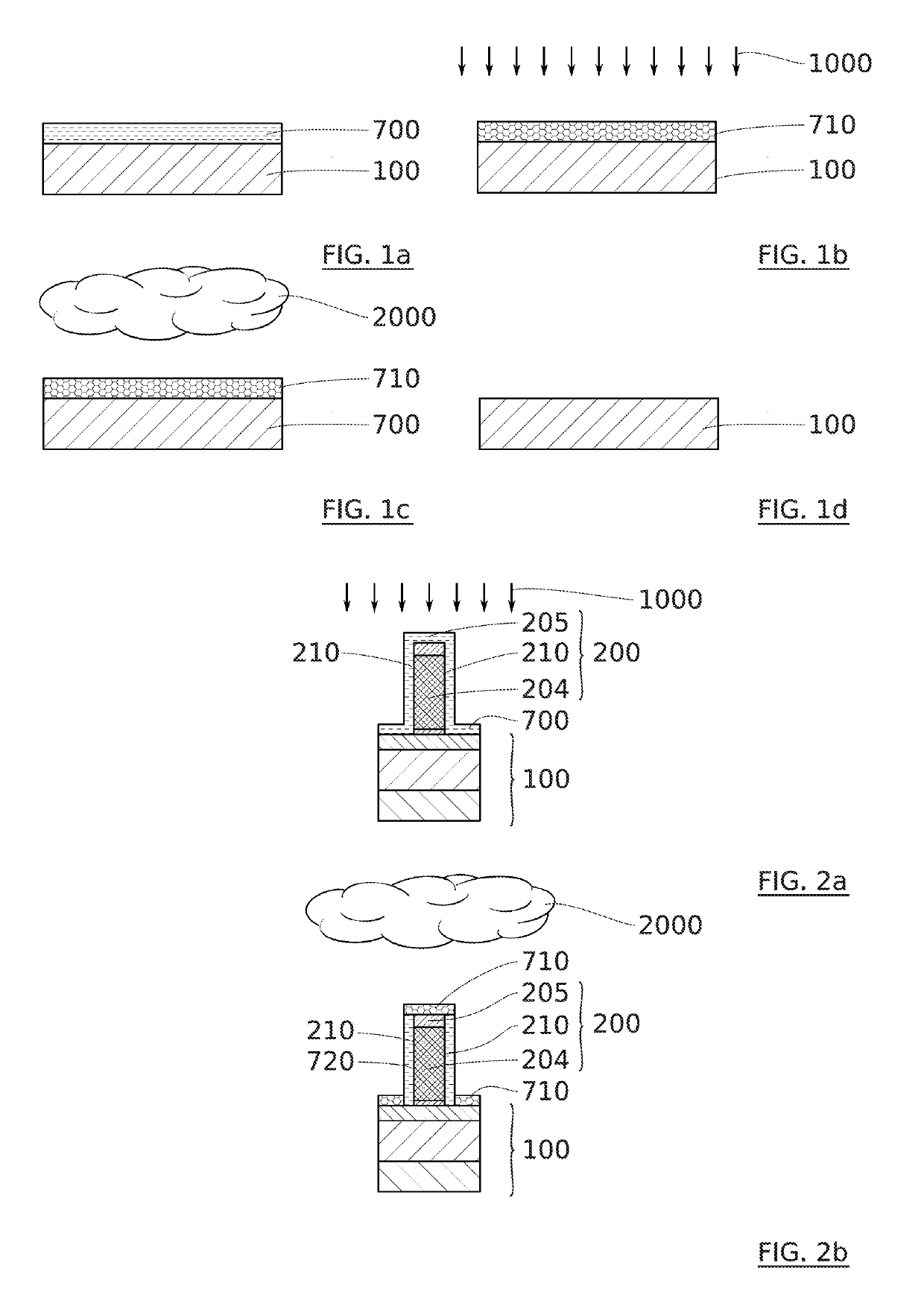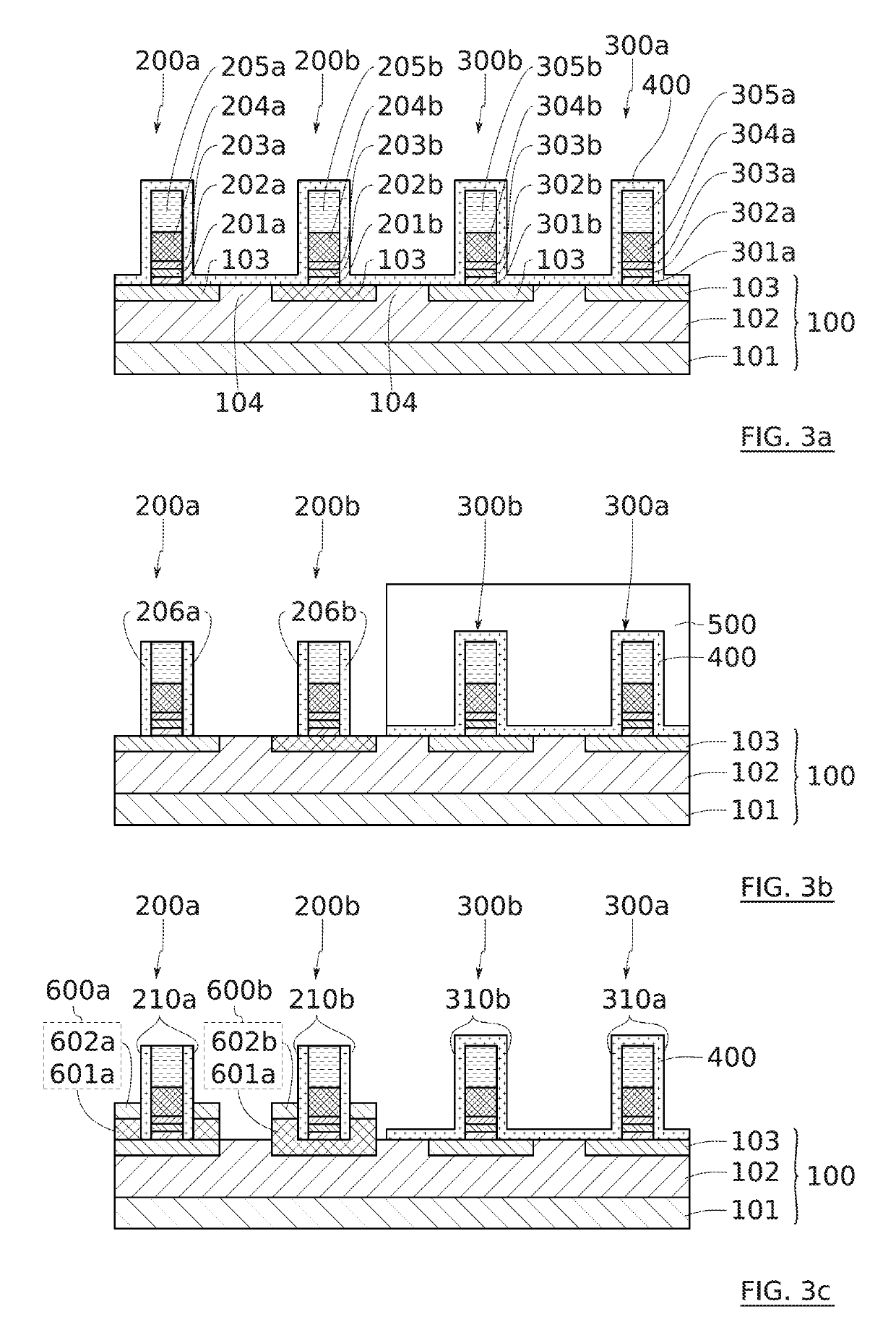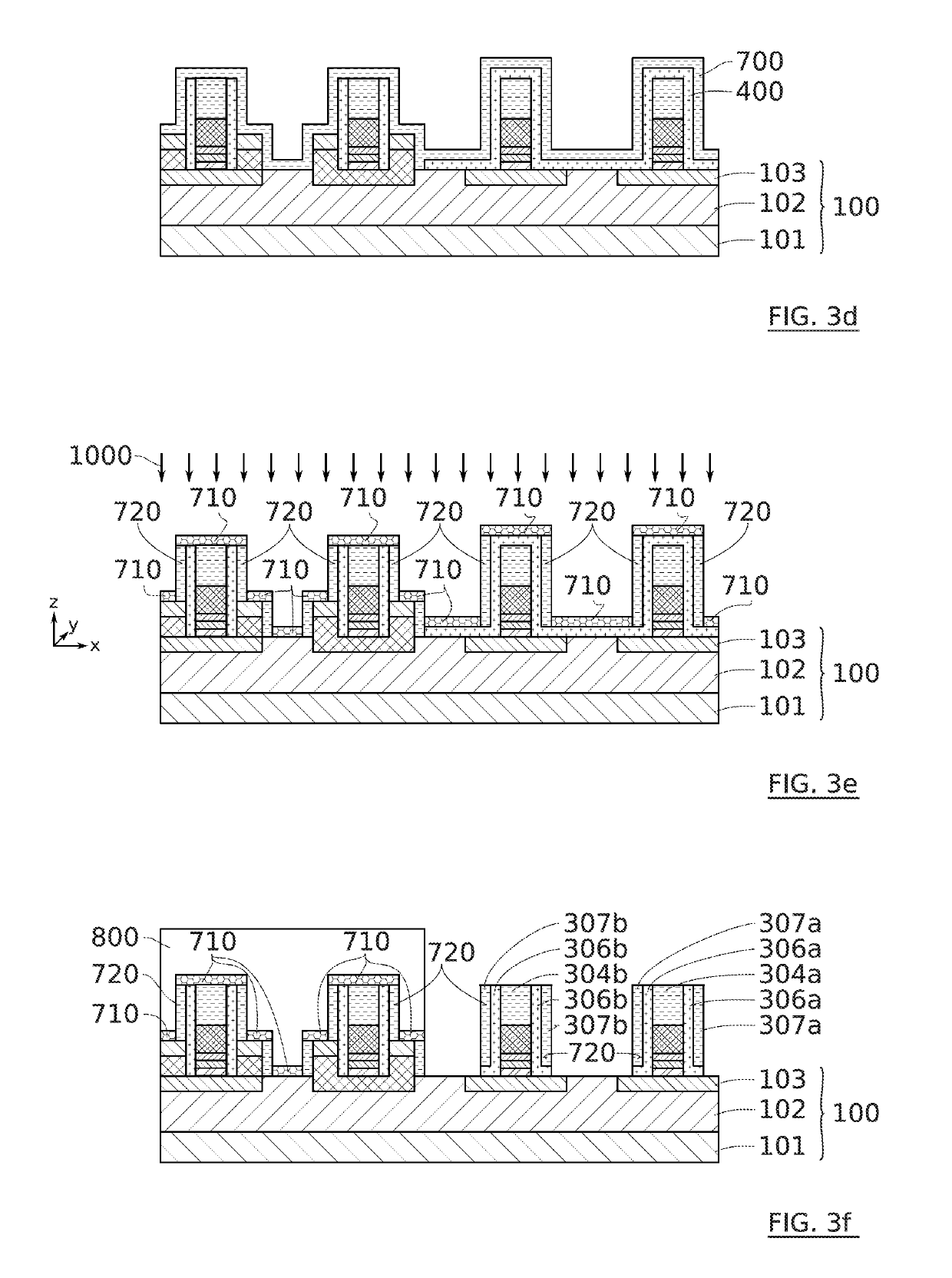Process for etching a SiN-based layer
a technology of silicon nitride and etching process, which is applied in the direction of semiconductor/solid-state device manufacturing, electric devices, transistors, etc., can solve the problems of significant deterioration of the performance of transistors, unintentional etching of the underlying layer of silicon, and incomplete etching of the layer of silicon nitride, so as to improve the selectivity and improve the etching effect of the layer
- Summary
- Abstract
- Description
- Claims
- Application Information
AI Technical Summary
Benefits of technology
Problems solved by technology
Method used
Image
Examples
first embodiment
[0095]the present invention will be described in reference to FIGS. 1a to 1d. All the features, steps and advantages described in reference to these FIGS. 1a to 1d apply to all the other embodiments of the invention and in particular to those described in the other drawings.
[0096]FIG. 1a illustrates a first step that involves providing a stack of layers comprising at least one substrate 100 above which there is a layer containing silicon nitride 700.
[0097]The substrate 100 can be a bulk single-layer substrate as illustrated in FIG. 1. Alternatively, the substrate 100 can be formed by a plurality of superimposed layers as illustrated in the examples of FIGS. 2a and 2b and 3a to 3h. The substrate 100, at its interface with the layer containing silicon nitride, is for example made from a semiconductor material preferably chosen from silicon (Si), germanium (Ge) and an alloy of silicon and germanium (SiGe). Alternatively, the substrate 100, at this interface, is made from an insulating ...
second embodiment
[0142]A second embodiment will now be described in reference to FIGS. 2a to 2b.
[0143]In this embodiment, the substrate 100 comprises a stack of layers. A pattern 200 is formed on the substrate 100. This pattern 200 is for example a transistor gate stack. Typically, this stack comprises at least successively starting from the substrate 100: an insulating layer forming a gate oxide, a gate 204 and a hard mask 205. The various layers forming such a pattern will be explained in detail in reference to FIG. 3a.
[0144]Before step 2a, a layer 700 containing silicon nitride is deposited on the pattern 200 and on the substrate 100. This deposition is conformal. The thickness of the layer 700 is therefore homogenous on the sides 210 of the pattern 200, on top of the pattern 200, and outside of the pattern 200.
[0145]Step 2a illustrates the modification of the layer 700 containing silicon nitride via the implantation 1000 of light ions. The implantation is anisotropic. The main direction of imp...
third embodiment
[0151]In reference to FIGS. 3a to 3h and 4, the invention will now be described.
[0152]FIG. 3a illustrates a structure starting from which the steps of the method according to the invention are carried out. This structure comprises transistors in the process of being formed.
[0153]This structure comprises:[0154]an elaborate semiconductor on insulator (SOI) substrate 100. In the example illustrated, this elaborate substrate successively comprises a supporting layer 101; for example made of monocrystalline, polycrystalline or amorphous silicon; an insulating layer 102, usually called buried oxide (BOX for “Buried Oxide”) and an active semiconductor layer 103 intended to form a conductive channel of a transistor. The latter layer is for example made of silicon (Si), germanium (Ge) or silicon-germanium (SiGe), preferably monocrystalline.[0155]gate patterns 200a, 200b, 300a, 300b. As illustrated in FIGS. 3a to 3h, the semi conductor layer 103 is discontinuous in order to form disjointed po...
PUM
 Login to View More
Login to View More Abstract
Description
Claims
Application Information
 Login to View More
Login to View More - R&D
- Intellectual Property
- Life Sciences
- Materials
- Tech Scout
- Unparalleled Data Quality
- Higher Quality Content
- 60% Fewer Hallucinations
Browse by: Latest US Patents, China's latest patents, Technical Efficacy Thesaurus, Application Domain, Technology Topic, Popular Technical Reports.
© 2025 PatSnap. All rights reserved.Legal|Privacy policy|Modern Slavery Act Transparency Statement|Sitemap|About US| Contact US: help@patsnap.com



